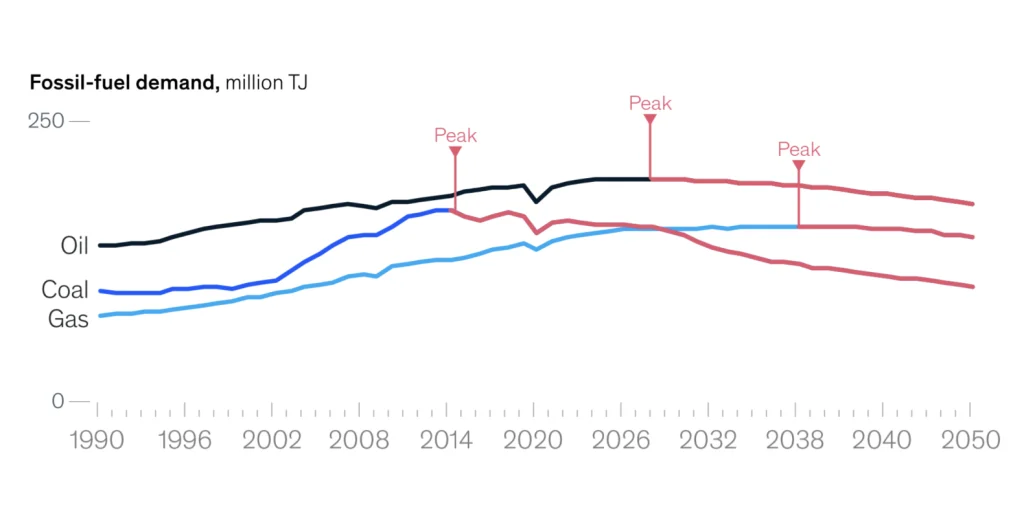We use cookies to ensure we give you the best experience on our website. By clicking Agree you accept our Privacy and Cookies Policy.
The future of Oil and Gas: industry trends and software solutions

 6 minutes read
6 minutes read
Content
Our previous articles analyzed how disruptive technologies reshape such industries as education, finance, and healthcare. Now let’s look at the oil and gas industry trends from the technological point of view.
In the next few decades, oil and gas companies will have to cope with serious challenges – reducing the damage to the environment, making a profit, and staying competitive in a world that is getting less predictable and complex. Forward-thinking companies pursue the path of digitalization, which makes these goals more achievable, and helps survive the crisis worsened by the Covid-19 situation. Predictive analytics and process automation are the primary areas of application for state-of-the-art technologies, such as Artificial Intelligence, IoT, or Blockchain. Digitalization impacts the speed, safety, and cost of oil and gas production. And these factors are critical as the competition is tough not only from other industry players but also with developers of renewable energy. However, according to McKinsey, the demand for oil and gas will return to its pre-pandemic level and continue to go up to support the growth of the emerging economies, especially the aviation and chemical industries.

Source: McKinsey
Oil and gas industry trends
The internet of things
The IoT is a system of wearables, transport, equipment, facilities, etc., interconnected through the Internet. With electronics and sensors, all these elements automatically collect and transfer massive amounts of data processed on a single platform. According to 451 Research’s Voice of the Enterprise Survey, most oil & gas companies use IoT for process optimization and data tracking in supply chains, and one-fifth of the respondents plan to introduce it for this purpose in the years to come.
Although many solutions are cloud-based, the IoT is also closely connected to edge computing – when information processing is done closer to the edge where people consume it. For instance, sensors used for explosion prevention do not send the data to the cloud but alert the local system. Here are a few IoT use cases:
- Efficient logistics. Onshore reservoirs are equipped with sensors, which measure oil levels and send trucks automatically when they need emptying.
- Preventive equipment maintenance. Sensors track oil pumps’ performance and notify about vulnerabilities that may lead to breakages and potential safety threats for employees.
- Control over oil flow and composition. In the oil field, analyzers continuously measure oil compounds within pipelines and compare them against simulated environments’ optimal parameters. This information is valuable for planning the following operations.
- Seismic exploration. Vast amounts of data obtained from seismic sensors are processed and compared by the system to identify new productive drilling locations, map them and optimize their output.
AI and ML
There is an Everest of information in the oil and gas industry. Machine Learning, as an attribute of Artificial Intelligence, offers a novel approach to data processing. Cognitive systems automatically use improving algorithms to decipher the deep meaning of data, derive concepts and connections. The human brain alone cannot perform such an advanced level of analytics.
- Insights. AI-assisted findings based on visual and aural data and sensor information obtained from the Internet of Things help make better decisions and streamline complex processes.
- All-round predictive analysis of mass media, social platforms, and other sources identifies various trends and possible events that may threaten a company’s reputation and impact financial matters. Early awareness helps adjust the strategy and minimize risks.
- Assessment and prevention of pipeline risks thanks to geospatial analytics. By aggregating such factors as incident records, proximity to naturally dangerous areas, water sources, etc., AI builds a pipeline vulnerability model and suggests monitoring frequency and emergency response measures.
- Precautions against equipment dysfunction. With AI, oil and gas companies can create scenario-based event simulations, detect potential equipment deficiencies, and start maintenance before any breakages occur.

Blockchain
Like in other industries, the technology serves as an enabler of smart contracts between companies in the oil & gas domain. It creates transparency and decreases security vulnerabilities, especially in low-trust operations.
- Facilitation of trade. Blockchain ensures high security, eliminates manual paperwork, and considerably reduces the time spent on trade deals. All parties have synchronous access to data, which enhances accuracy and simplifies any settlements and adjustments to the contract.
- Streamlined invoicing. Sensors gather real-time data on oil or gas output from multiple points and invoice consumers. Blockchain ensures accurate execution of contracts and prevents fraud contracts. Such automatic billing reduces transaction times and requires fewer staff.
In-memory computing
In-memory computing uses middleware software for storing data in RAM and processing them parallelly on a group of computers without a centralized database. It allows achieving a remarkable performance. The technology is extremely complex, and there are around a dozen providers of middleware for commercial use in the world. In-memory computing allows oil & gas companies to gather advanced business intelligence (BI), speed up business processes, and facilitate decision-making.
Predictive modeling. In-memory computing enables in-depth analysis of various internal and external factors, for instance, pricing trends. Data is then visualized to highlight opportunities for improving sales efficiency and profit margins. These insights are accessible in real-time on mobile devices and facilitate management decisions.
Robotic process automation
RPA bots serve as a digital workforce and automate repetitive pattern operations, reducing human errors and saving thousands of man-hours. Robotic Process Automation is applied to tackle the following tasks, to name just a few:
- Data migration in case two companies merge, or there is an acquisition
- Accounting and HR-related operations
- Close processes with automated security checks and alerts
- Ensuring gas pipeline compliance
There are many limitations in the oil and gas industry that make digitalization difficult, such as sensitivity to physics laws, health and safety risks, and the necessity to comply with numerous government regulations, the complexity of supply chains, etc. All these factors involved simultaneously create inertia that is not easy to overcome. However, fortune favors the bold. Introducing innovation is essential for future growth. Fostering a digital mindset on an organizational level and in partnership with a reliable and experienced software development company ensures a smooth digital transformation.
Conclusion
For over seven years, the Blackthorn Vision team has been cooperating with Rockwell Automation Inc., a Fortune 500 company and a global Digital Oilfield Leader. The Connected Production Project is an ultramodern web solution (SPA) to monitor and control the oil and gas recovery sites. It has a client-server structure and supports communication with IoT devices. For the user, it is an intuitive interface with interactive dashboards that visualize real-time and historical data aggregated over some time as charts, tables, and many other components, which allows for making better decisions.
We will be happy to design world-class software of any complexity for your company to help achieve business goals. Let’s get in touch!







































































